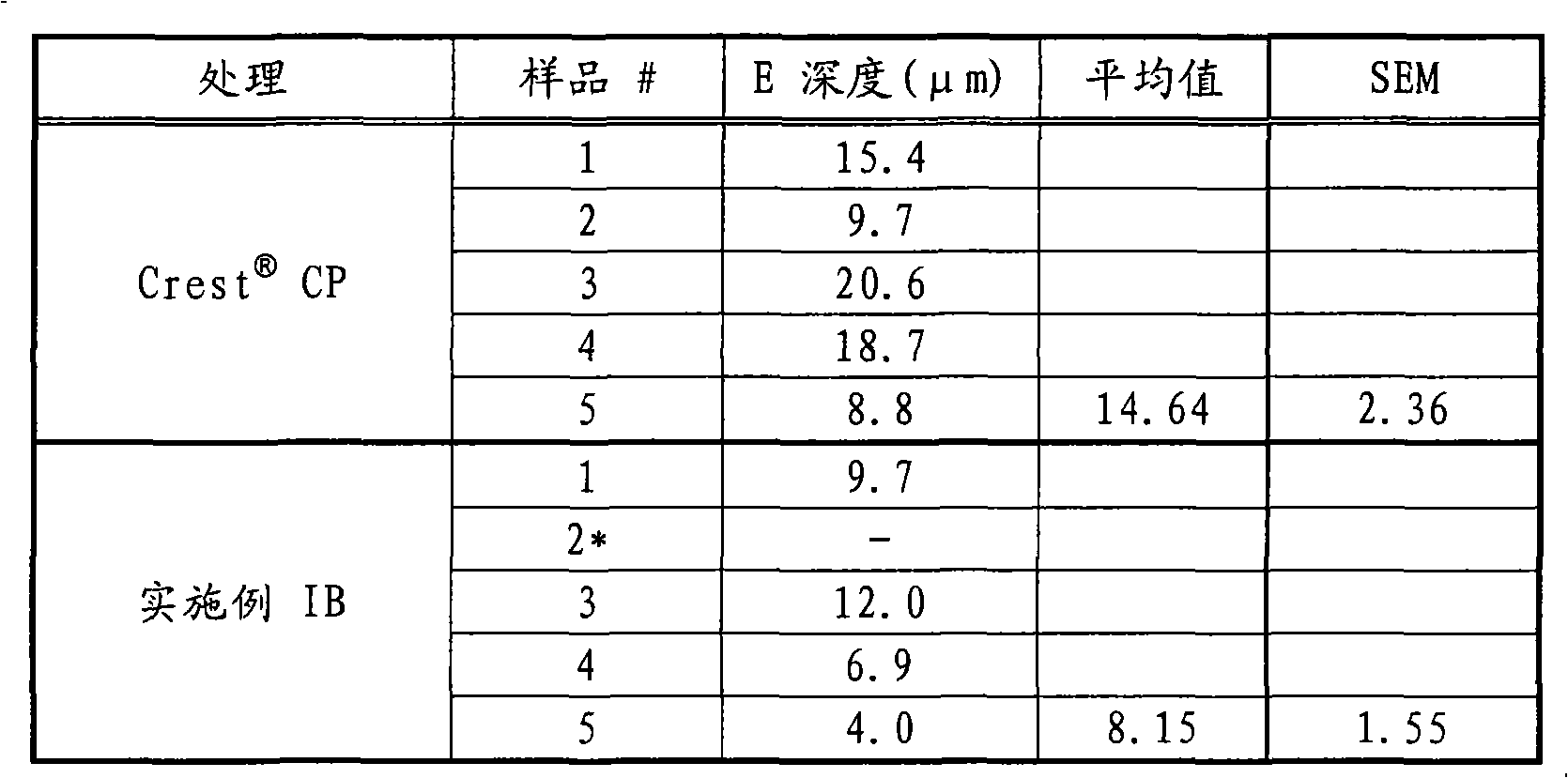Oral care compositions comprising zinc and phytate
A technology of oral care and composition, which is applied in the field of oral care composition, and can solve the problems of short-term anti-plaque effect
- Summary
- Abstract
- Description
- Claims
- Application Information
AI Technical Summary
Problems solved by technology
Method used
Image
Examples
example
[0107] The following examples further describe and illustrate examples within the scope of the present invention. These examples are given by way of illustration only and should not be construed as limiting the invention, since many changes are possible therein without departing from the spirit and scope of the invention.
[0108] Dentifrice Composition Example I
[0109] Dentifrice compositions according to the present invention (IA to IF) and comparative examples (IG and IH) are listed below in weight percent of components. These compositions are prepared using conventional methods.
[0110] Element
[0111] 1 Zinc Carbonate AC was supplied by Bruggemann Chemical: Newtown Square, PA, USA
Embodiment II
[0113] The antimicrobial efficacy of the present compositions was measured using an in vitro plaque glycolysis and regeneration model (i-PGRM). Efficacy in controlling supragingival calculus was defined as prevention of plaque calcification activity, using a modified plaque growth mineralization assay. The efficacy of formulations containing ingredients associated with tooth discoloration, such as tin and copper ions, to prevent tooth discoloration was measured using an in vitro thin film tea stain model (i-PTSM). The aesthetic acceptability of the formulation, such as reduction of astringency, taste acceptability and application experience, is determined by controlled consumer testing.
[0114] antimicrobial activity
[0115] The concentration and bioavailability of zinc ions required for therapeutic action regulation may vary for different clinical actions, eg, antiplaque versus gingivitis. However, since the therapeutic activity of zinc can be adjusted below this concen...
example III
[0123] Example III Anti-corrosion Efficacy
[0124] In addition to the therapeutic and cosmetic benefits mentioned above, it was demonstrated in studies using an in vitro erosion cycle model that the present composition comprising a water insoluble zinc salt and phytic acid also resists the onset and progression of dental erosion. Erosion in this context means the permanent loss of tooth material from the surface by the action of chemicals, such as harsh abrasives and acids, as distinguished from surface demineralization or caries, which is caused by the action of bacteria. Tooth erosion is a condition that does not involve plaque bacteria and is therefore distinct from dental caries, which is a disease caused by acids produced by plaque bacteria. It is believed that the present compositions deposit a barrier film or coating on the surface of the teeth thereby protecting the teeth from the erosive effects of exposure to aggressive agents.
[0125]Human tooth enamel samples ...
PUM
 Login to View More
Login to View More Abstract
Description
Claims
Application Information
 Login to View More
Login to View More - R&D
- Intellectual Property
- Life Sciences
- Materials
- Tech Scout
- Unparalleled Data Quality
- Higher Quality Content
- 60% Fewer Hallucinations
Browse by: Latest US Patents, China's latest patents, Technical Efficacy Thesaurus, Application Domain, Technology Topic, Popular Technical Reports.
© 2025 PatSnap. All rights reserved.Legal|Privacy policy|Modern Slavery Act Transparency Statement|Sitemap|About US| Contact US: help@patsnap.com



